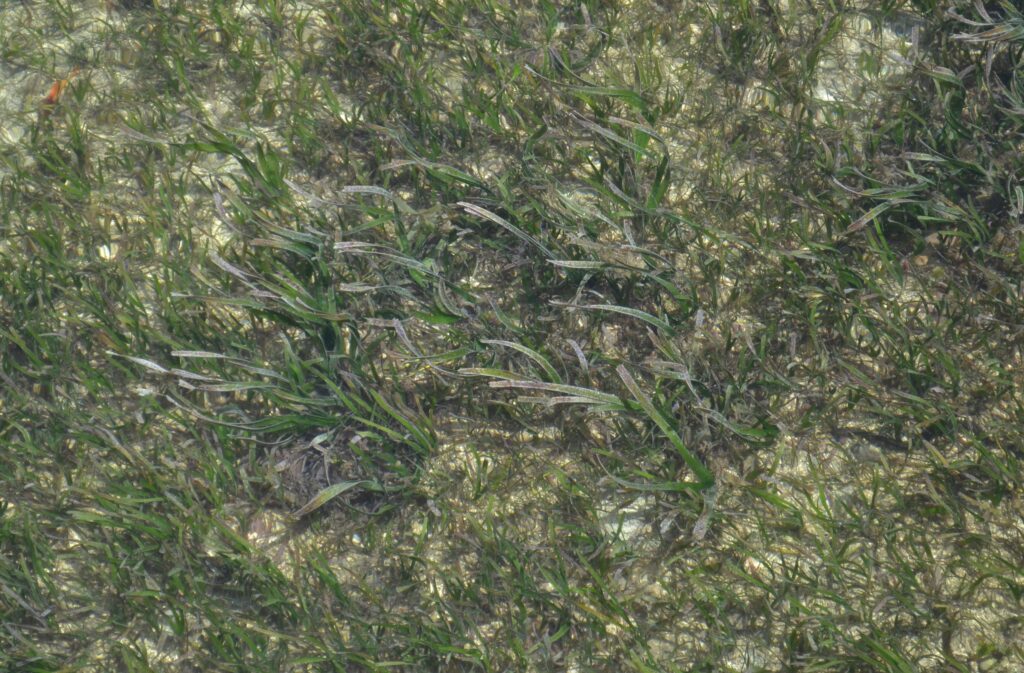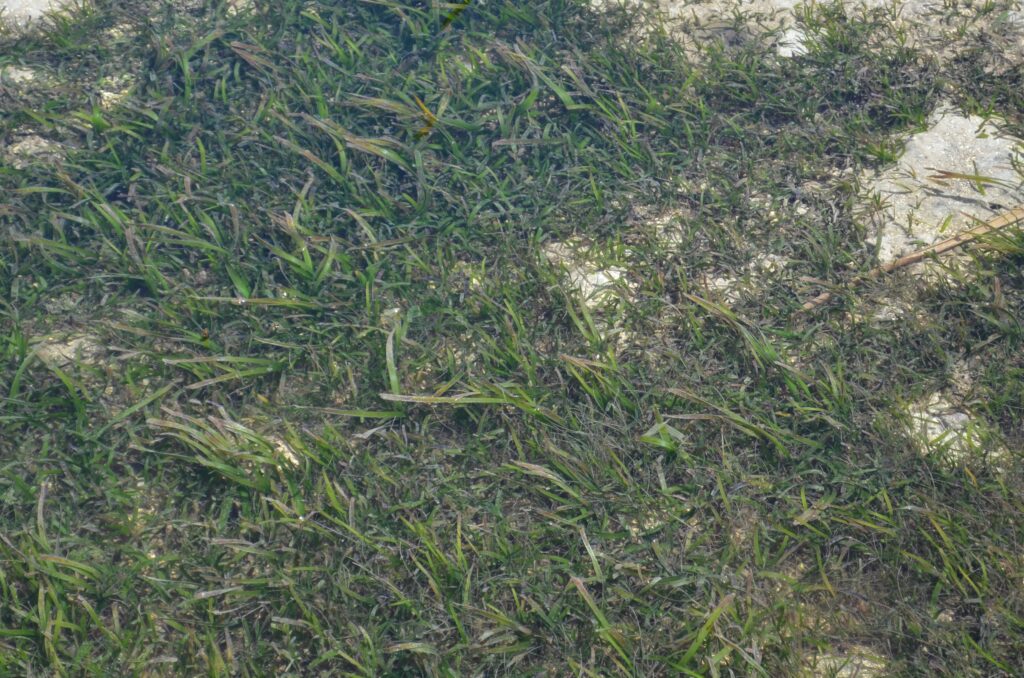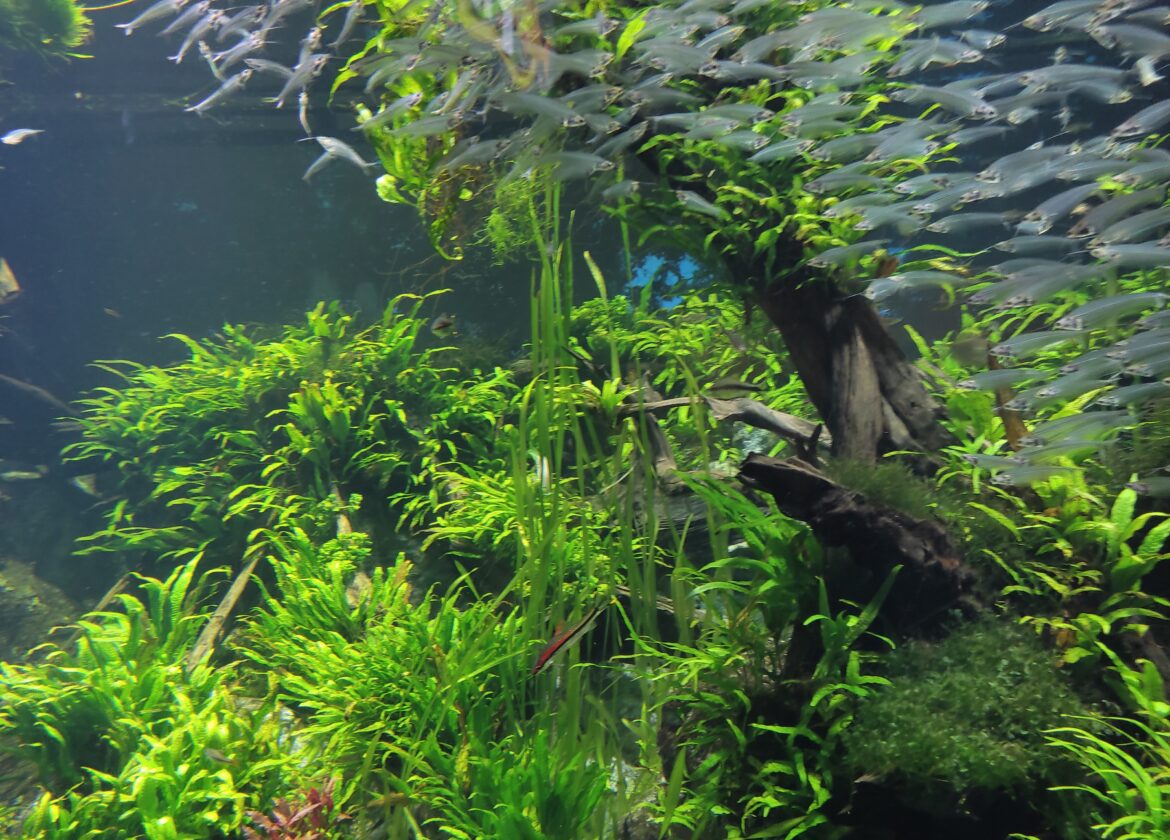Text and Photos by Henrylito D. Tacio
What do mangroves, coral reefs and seagrasses have in common? They are all found in the coastal ecosystem, that’s what.
But while mangroves and coral reefs have been given much prominence in newspapers and television, such is not the case of seagrasses which have been ignored.
To rally support for the conservation of seagrass ecosystems around the globe, March 1 has been declared as the World Seagrasses Day.
“Seagrasses comprise one of the most conspicuous ecosystems of the shore,” said Gregory C. Ira, former environment director of the Silang-based International Institute of Rural Reconstruction (IIRR). “Thus, seagrasses have a fundamental ecological importance as well as economic significance.”
Seagrasses, commonly known as isay or lusay, are actually not grasses. They are monocotyledonous plants. They are the only group of underwater living plants in the marine environment that flower. However, little is known about the way and the time seagrasses reproduce in the Philippines.
What is commonly known is that most of the seagrasses are found in places where a suitable shallow, muddy or sandy substrate with high transparent water exists and in areas relatively free from strong wave action. They require circulation of the overlying water which facilitates the delivery of nutrient and substrate materials and removal of metabolic waste products.
“Seagrass is an important part of the marine ecosystem,” said the Biodiversity Management Bureau (BMB) of the Department of Environment and Natural Resources (DENR).
Seagrass meadows – bountiful underwater gardens that nestle close to shore – act as a buffer for coastal communities from the full impact of sea waves. “Their extensive and complex root system protects coastlines from erosion,” BMB said.
Seagrasses also help the ecologically-fragile coral reefs. “Seagrass meadows can help build and maintain coral reef islands,” BMB said.
A recent study showed that a total annual sediment production of 1.1-square kilometer of seagrass is 762,000 kilograms, of which 482,000 is enough for island-building.
Seagrasses also act as natural water filters. “They improve water quality by trapping nutrients, pollutants, dissolved organic, and organic nutrients from the water column,” BMB said.
The seagrass beds are considered as the pastures of the sea. “They are one of the highly productive marine ecosystems, supporting numerous herbivore- and detritivore-based food chains,” the BMB explained.
Seagrass, for instance, is a major food source for a number of grazing marine animals such as the dugongs and green sea turtles. An adult green turtle can eat about two kilograms (wet weight) of seagrass a day while an adult dugong, about 28 to 40 kilograms (wet weight) a day.
Like coral reefs, seagrasses are an ideal refuge for young and small adult fish when escaping larger predators. Their extensive root system also provides protection for animals living in soft bottom sediments.
Seagrass meadows provide a cozy home for a lot of animals such as crabs, starfish, clams, scallops, mussels, snails, worms, sea cucumbers, and sea urchins. Some fish, such as seahorses and lizardfish, can be found in seagrasses throughout the year. Shrimps spend the early stages of their lives in seagrass areas.
Dr. Miguel Fortes, a retired professor of marine science, said that coral reefs and seagrass beds could “potentially supply more than one-fifth of the fish caught in Southeast Asia.”
In the Philippines alone, a total of 1,384 individuals and 55 species from 25 fish families have been identified from five seagrass sites.
“All have economic value, mostly as food and aquarium specimens,” said Dr. Fortes, a former University of the Philippine marine science professor. “Five times as many fish live in seagrass beds as above sea floors of mud, shells, and sand.”
Unknowingly, the leaves of seagrasses provide an anchoring space for tiny animals. “Bryozoans, forams, and sponges – animals we do not easily notice – cling on to seagrass leaves for shelter, much like lichens and moss growing on trees,” the BMB said.
A few seaweeds grow in seagrass beds. These seaweeds can be harvested as food (Caulerpa, Ulva) or as sources of chemicals for industries (Gracilaria, Eucheuma, Sargassum).
More importantly, seagrasses can help combat climate change. “Seagrass meadows could play a vital role in combating climate change as they are regarded as a net global sink for carbon,” said Adam Hejnowicz, lead author of a study that was published in Frontiers in Marine Science.


“They have the capacity to bury significant deposits of organic carbon beneath the sediment, up to many meters thick in places and over millenary time scales,” he further said.
“These ecosystem services of seagrasses are what we need to appreciate more nowadays especially with the rapid coastal development and inevitable climate change impacts,” the BMB said in a statement.
“The capacity of seagrass systems to provide goods and services that satisfy and sustain human needs is highest when seagrass beds are intact and undisturbed,” commented Ingrid Gevers, a marine biologist who once worked with a European project in Western Samar.
The Philippines has the second highest number of seagrass species in the world. The country is home to 16 of the world’s 50 seagrasses; it has more seagrass species than Indonesia, Malaysia or Brunei. Unfortunately, most of these species are on the verge of extinction.
“(Seagrasses) are at great risk of being lost and if trend continues at current rates, a further 30%-40% of seagrasses and nearly all unprotected mangroves could be lost in the next 100 years,” deplored Dr. Fortes.
Marine science experts traced the rapid disappearance of seagrasses to various destructive disturbances caused by both natural and man-induced influences.
Among the natural threats are cyclones, typhoons, tidal waves, and volcanic activity.
Man-made causes include agricultural cultivation and mining, which led to heavy siltation in estuarine areas which, in turn, resulted in lower productivity and even burial of seagrasses, DENR claimed.
“Seagrass beds are under pressure due to the basic need of human beings for food production, transportation, waste disposal, living space and recreation,” commented Gevers.

